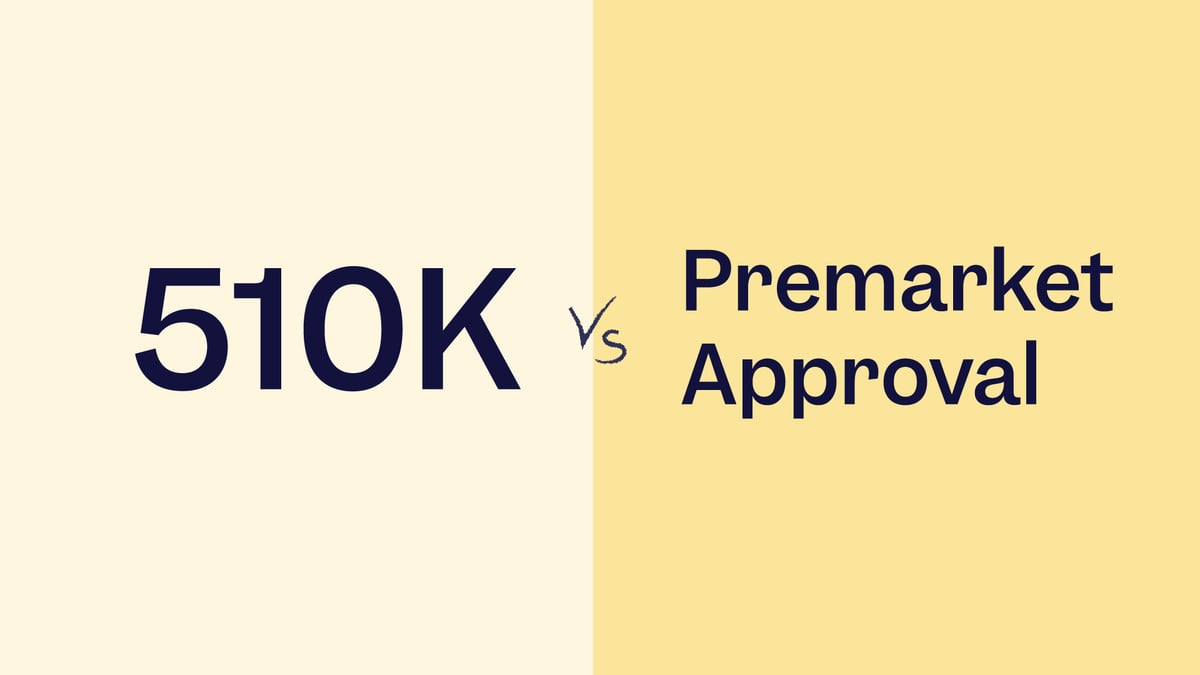
510k vs PMA represents two feasible routes for filing a medical device application in the USA. Similar to other US FDA regulatory frameworks, the applicability of the 510K (also known as Premarket Notification) and Premarket Approval is decided based on the safety and effectiveness of the medical device for the end user.
What is a 510K (aka Premarket Notification)?
A 510K submission is documented evidence that proves the so-called “substantial equivalence” of your medical device to an already approved medical device by the FDA. You will want to compare and contrast your new device with other equivalent or similar devices already on the market. Therefore, manufacturers may need to conduct several laboratory tests to prove their substantial equivalence to other devices. However, human testing is rare for 510K submissions. The manufacturers need to submit the information contained in their Design Control Processes, which may include information related but not limited to the intended use of the device, indication for use, design inputs, and design verification.
The 510K submission process can take anywhere between 30 to 90 days for the FDA. If the FDA accepts your application, your submission will be published in the FDA 510K database.
What is Premarket Approval?
The premarket approval process is more rigorous than the 510K as it proves the safety and effectiveness of the new medical device on the basis of clinical trials with human participants along with laboratory testing. The standards for premarket approval are much more stringent than that for 510K submissions. The FDA takes a call on the rejection or acceptance of premarket approval applications within only 180 days.
510K vs PMA: Making the choice
We already learned that the choice between 510K vs PMA depends on the safety and effectiveness of the device. The safety and effectiveness of a product are associated with the risk-based medical device classification system devised by the FDA. Additionally, the novelty of the device design and usage also impacts the safety and effectiveness of the device. Hence, the following two factors will help you decide between the 510K and premarket approval paths:
Medical Device Classification
The FDA’s medical device classification system is also risk-based. Therefore, depending on your product’s device class, you may decide between a 510K vs PMA.
For example, Class I medical devices are simple, with low to moderate risk to patient safety and efficacy. These devices can be marketed without premarket submission. Class II devices carry a moderate to high risk for patients. Therefore, all Class II devices require a premarket notification (510K submission) before they can be legally marketed in the US. Lastly, Class III devices have a higher risk to patient health than Class I or Class II; hence, manufacturers need to follow rigorous due diligence before their product can be placed on the market. That is why all Class III devices must go through premarket approval submissions.
To summarize, Class I devices require very little due diligence as they require neither 510K submissions nor premarket approval submissions. Class II devices require reasonable due diligence as they require 510K submissions. And Class III devices require the highest due diligence as they require premarket approval submissions.
Availability of a Similar Device on the Market
Medical device classification is one of many factors that decide the required level of due diligence. Another factor that determines the level of due diligence is the newness of the device. The availability of a similar device on the market is beneficial in anticipating risks associated with such a device with better understanding.
Therefore, suppose the device you wish to market is highly innovative, with no similar device available on the market yet. In that case, you have to follow a more stringent approach than marketing a device that is similar to another device already on the market.
But let’s assume a similar device is indeed available on the market. In that case, the manufacturers must prove that their device has the same functionality, application, safety, and effectiveness as the already available medical device. Such devices can be legally marketed without premarketing submissions or through the 510K route, depending on the medical device class. However, a highly innovative device may require more rigorous scrutiny and a premarket approval route.
Based on above mentioned two factors, let’s review the most important scenarios:
Devices Similar to Other Marketed Devices
-
-
- Class I device, similar to another marketed device, has the lowest perceived risk to patient safety and health. Therefore, manufacturers may market such devices without any premarket submissions.
- Class II devices similar to other marketed devices with known moderate risks can be marketed after receiving approval for premarket notification or 510K Submission.
- Class III devices, identical to other marketed devices with high risk to patient safety and health, will be marketed by completing the due diligence for premarket approval filing.
-
Devices Not Similar to Other Marketed Devices
Manufacturers can file a “De Novo” request for the FDA to make a risk-based classification of their device into Class I or II without first submitting a 510K and receiving a “Not Substantially Equivalent” determination. After the FDA classifies the device, manufacturers can proceed with either a 510K submission or premarket approval.
-
-
- Class I device that is not similar to another marketed device may need 510K submission even if it poses a low risk to the patient health.
- Class II devices not similar to other marketed devices may also be required to take the 510K route, as in the case of Class II devices similar to other devices available on the market.
- Class III devices not similar to other marketed devices are expected to undergo the highest level of due diligence. Therefore, any highly innovative Class III device will have to go through the entire premarket approval filing process.
-
Conclusion
Deciding on your approach to filing a medical device can be easy after a rationalized risk assessment. The risk can be anticipated based on device use, indication, and possible threat to human safety. Manufacturers can leverage resources like the 510K database or the De Novo database to evaluate the device’s eligibility for 510K submission or premarket approval, respectively. The risk-based filing approach is a win-win for both manufacturers and patients as manufacturers can market less risky devices without much delay, and patients may avail themselves of them as soon as possible. Similarly, in the case of highly risky devices, the in-depth review helps protect patients’ health and future market complaints against the manufacturer. Hence, although the policies look tricky initially, they were rationally designed for the greater common good.
Whether you're navigating the 510k vs PMA regulatory pathways, Scilife Smart Quality Platform for Medical Devices is here to partner with you throughout the entire process to help you prove substantial equivalence, safety, and effectiveness.
Curious about how Scilife can help you launch your medical device to the market while being fully compliant?



